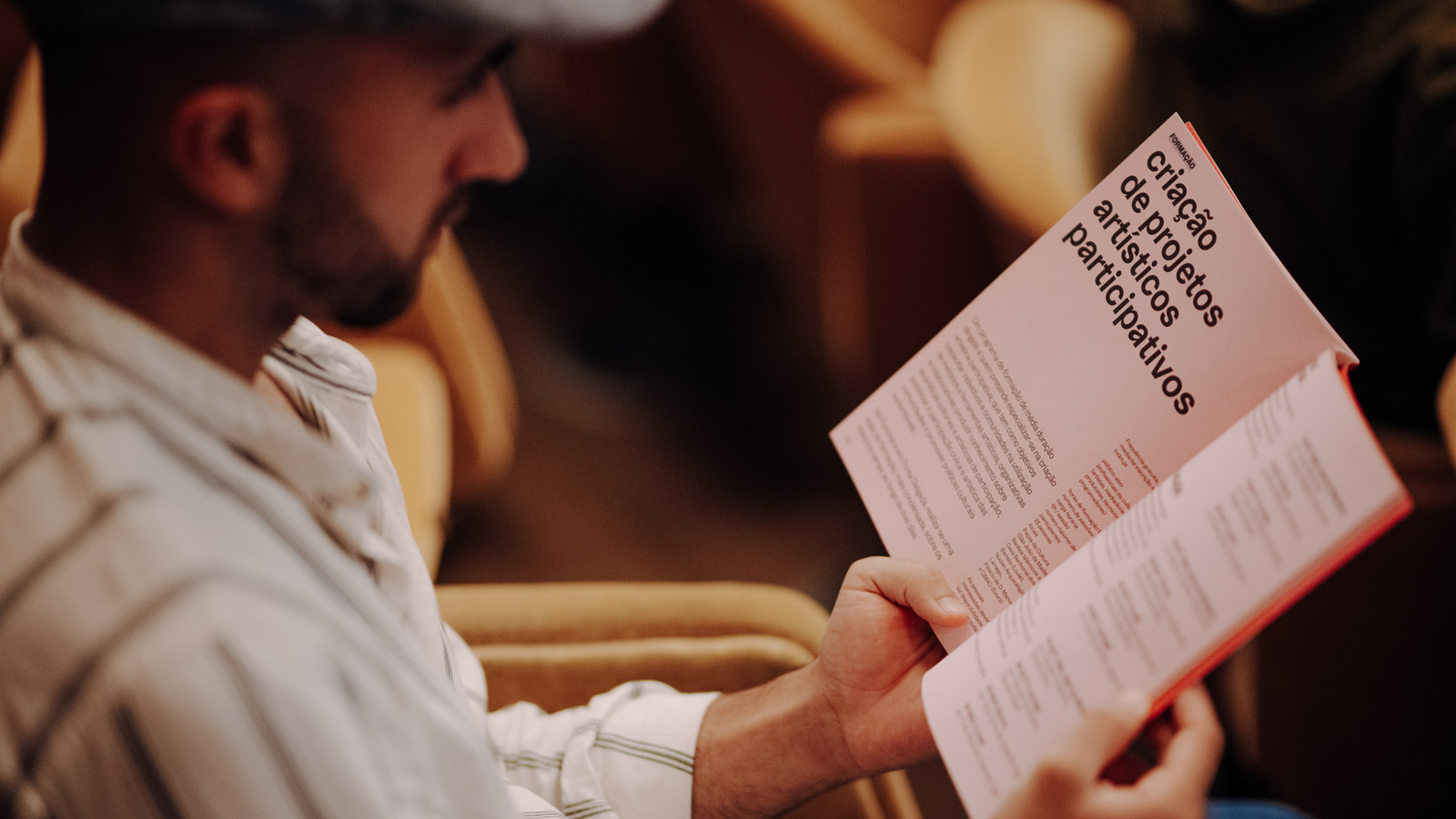‘There is no island’: participative art and the challenge of getting out into the territory
‘I’m here to defend passion for culture,’ announced Marcus Faustini. ‘It’s even better than passion for a lover.’ The crowd laughed, but Marcus was serious. ‘Passion for a lover ends in a couple of years and sometimes leads us to make mistakes.’ Passion for culture is transformative and lasts a lifetime.
Marcus was 14 years old when his Portuguese teacher, Maria Baptista, took the class, ‘squeezed us all into a Beetle and opened the window to recite poetry.’ It was a revolutionary moment. After discovering that ‘poetry wasn’t words, it was expression’ and that ‘speaking poetry was just as important as making and understanding poetry,’ the young Marcus found his passion for culture. ‘I was poor, a city kid in 1980s Rio de Janeiro. I come from a family of street vendors, of workers, and I was the first in my family to go to university,’ he explained. ‘A passion for culture was what brought me here,’ Marcus Faustini told participants at the conference ‘Atos para a democracia cultural’ [Acts for cultural democracy], which for the whole day of 18 October occupied Auditorium 3 at the Calouste Gulbenkian Foundation in Lisbon.
‘Passion for culture is transformative and lasts a lifetime.’
It was passion for culture, ‘not education,’ he argued, that gave him a ‘subjective mobility.’ ‘Culture gave me the possibility of understanding something of the world, it helped me enjoy history, speak better. It wasn’t school that changed me, it was the cultural practices that opened up networks in the city, that allowed me to mingle with different people. Culture gave me a series of attributes, even the most difficult of all, art.’
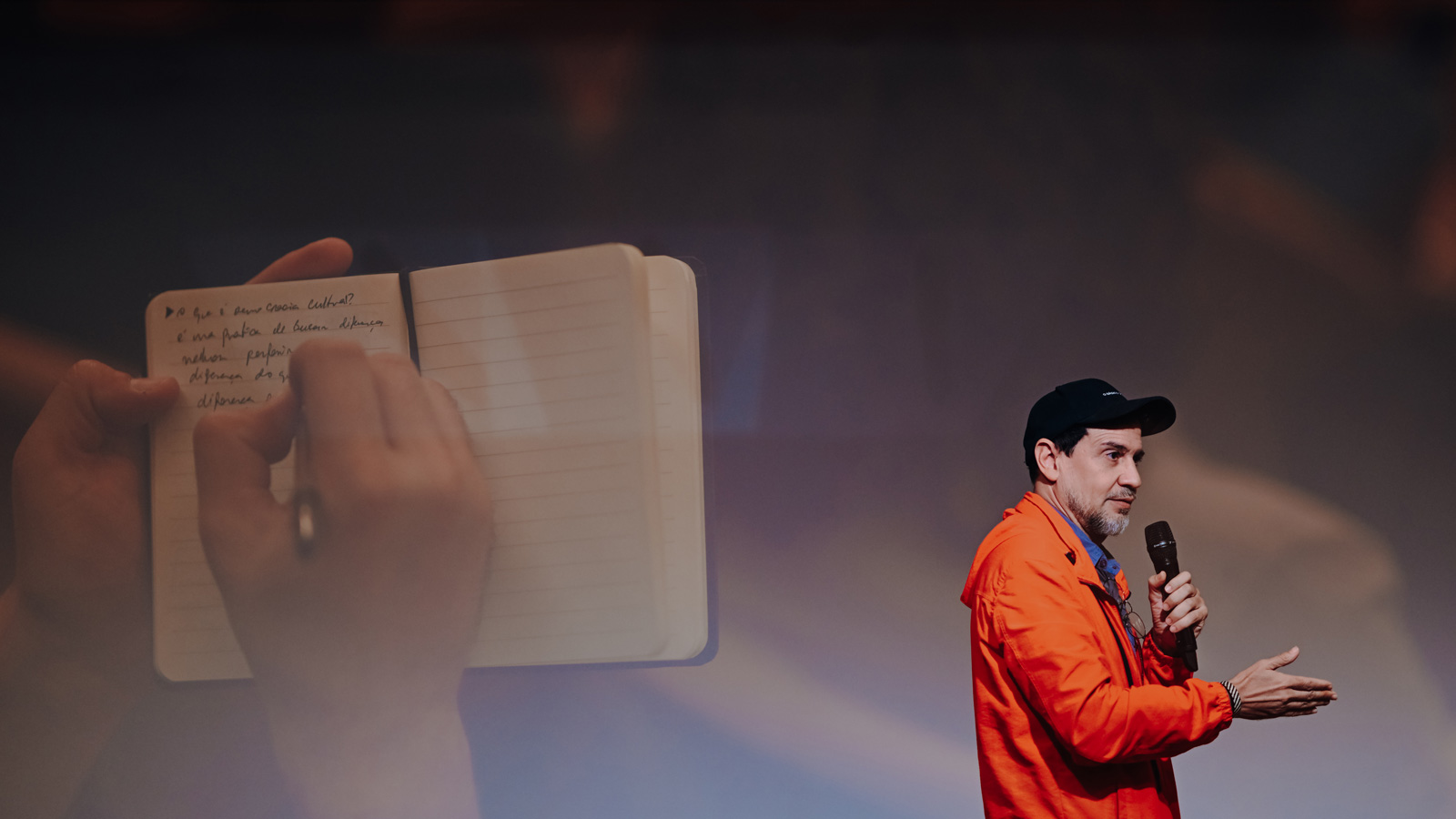
Today, Marcus Faustini is 52 years old and a teacher, filmmaker, writer and stage producer. He was Secretary of Culture for the city of Rio de Janeiro and Nova Iguaçu and has worked with disadvantaged communities, creating and implementing artistic methodologies for sociocultural impact. 13 years ago, in the favelas of Rio de Janeiro, he created the Agência de Redes para a Juventude [Youth Networks Agency]. Passion for culture gave him not just a greater awareness of the world in which he lived, but also the desire to transform it. ‘According to Rancière,’ he said, ‘democracy is the possibility of someone coming to a place and, through their own participation, reorganising that society.’ Faustini wants to take culture to all because he believes that, as he discovered himself, cultural practices can effectively transform individuals and, by extension, societies, making them more democratic and happier.
‘Culture with people so that we don’t give up on democracy’
But how can we contribute to that transformation? ‘Cultural democracy is a practice of seeking out the difference. Difference, and not just diversity,’ warned Faustini in his lecture. ‘We often respond to cultural democracy with the idea of diversity. We say we must have diversity. But when we practise diversity, we only include those who dress like us, who ‘wear’ a culture, who are already at university, who speak in the cultural codes, who already believe in art as representation. And then we create an edict and a quota to measure that diversity,’ he said, directing his criticism at institutions that often satisfy themselves with apparent actions of diversity that, in truth, have little impact on the community.
‘Cultural democracy is a practice of seeking out the difference. Difference, and not just diversity’
This practice of diversity has been shown to be insufficient, claimed Faustini. Culture remains ‘an island’ that many struggle to reach. That’s why, he argued, we need to start working with difference, ‘with those who don’t “wear” a culture’: ‘In the world of difference, there is no island; there is the possibility of some taking an interest in others.’
For this, we have to leave our offices: ‘Difference only appears when we actually get out into the territory,’ he said. And on this point, he issued another two warnings: territory is not a place, we can’t just leave the meeting room and be in the territory; territory is not a community of interests, it isn’t enough to bring together a group of people. Territory is a common practice, it is made of places, people, experiences, narratives, actions, sharing – it is community. And it is also the place of transformation.
To act effectively in territory, then, the first thing that artists and anyone else working in this area must do is to take off their suit of culture: ‘Place all their skills at the disposal of someone who doesn’t want to make art and culture. Someone who wants to open a small local business, who wants to better organise the day in their church or neighbourhood school. We mustn’t force all creation into an artistic object, but instead place all our training, all our ability to make networks, all our political and sentimental privilege at the disposal of people who don’t want to make art,’ advised Marcus Faustini. ‘For this, we need to have a more humble outlook: it’s not about making culture for people, it’s organising territorial participation without there necessarily being a desire to make art.’ In other words, taking methodologies, practices and artistic thinking and offering them up to the service of life.
And then comes a very important aspect: we need to ‘be out there in the territory, not teaching, but creating together.’ A mediator is not a teacher. ‘It isn’t a question of explaining what life is, from a foundation of culture, but making available all our tools so that we can create together. Positioning ourselves as just another participant, and not a synthesis of all of them, able to represent reality.’
Atos: leaving Rossio square and working ‘from Carrazeda de Ansiães to Tavira’
Calouste Sarkis Gulbenkian didn’t just have ‘an immense love of art and the diversity of cultural experience,’ but also, like Marcus Faustini, he believed in ‘the transformative power of art,’ recalled Martin Essayan, the founder’s great-grandson and current trustee of the Calouste Gulbenkian Foundation, at the opening session of the conference. In the letters Gulbenkian wrote to his only grandson, at school in England, he offered a range of advice on what might help realise his potential as a human being. Work hard and study, of course. But he also advised his grandson to admire the colours and smells of nature and to learn to appreciate art, encouraging him to visit museums and spend time there, ‘to really see.’ ‘Nature and art develop the soul and, thus, they also develop a resilience with which to face life, and that is perhaps more important than your school work,’ he told him. ‘Nature is accessible to all, in different ways, but art has not always been accessible. And that is what we must work towards,’ concluded Martin Essayan. ‘Everyone should have the opportunity to express themselves, to explore being human in myriad ways, and to develop their souls.’
‘Nature is accessible to all, in different ways, but art has not always been accessible. And that is what we must work towards’
In his opinion, Atos could be a significant contribution to making that accessibility a reality and that is why the foundation joined forces with the D. Maria II National Theatre (TNDMII) on this project from the outset. ‘Cultural participation and democratisation, one of the foundational pillars of Atos, is increasingly central to the work of the Calouste Gulbenkian Foundation,’ said Martin Essayan. In 2023, ‘the foundation launched a new strategy based on the pillars of sustainability and equity. And the civic role of art is fundamental. Art and culture can be key factors to understanding harmony and belonging.’
Prompted by the closing of the building in Rossio square for renovation works, forcing it to leave ‘its historical and symbolic seat,’ the D. Maria II National Theatre embarked on a National Odyssey in 2023. This situation ‘made us question the idea of centrality,’ explained the theatre’s artistic director, Pedro Penim, during one of the morning debate panels, at which the publication ‘Atos – Arte, Participação e Território’ [Atos – Art, Participation and Territory] was presented. The Teatro Nacional felt the need to leave the Lisbon-Porto axis and not just to cling to the coast, which is always more privileged. But more importantly: ‘We realised that this path could only be taken if we actually got out into the territory. And that means not necessarily presenting the work developed in Lisbon by the National Theatre, circulating it, like a simple tour, but rather wanting to listen, wanting to hear who is there.’ Wanting to work with others with a mindset of collaboration.
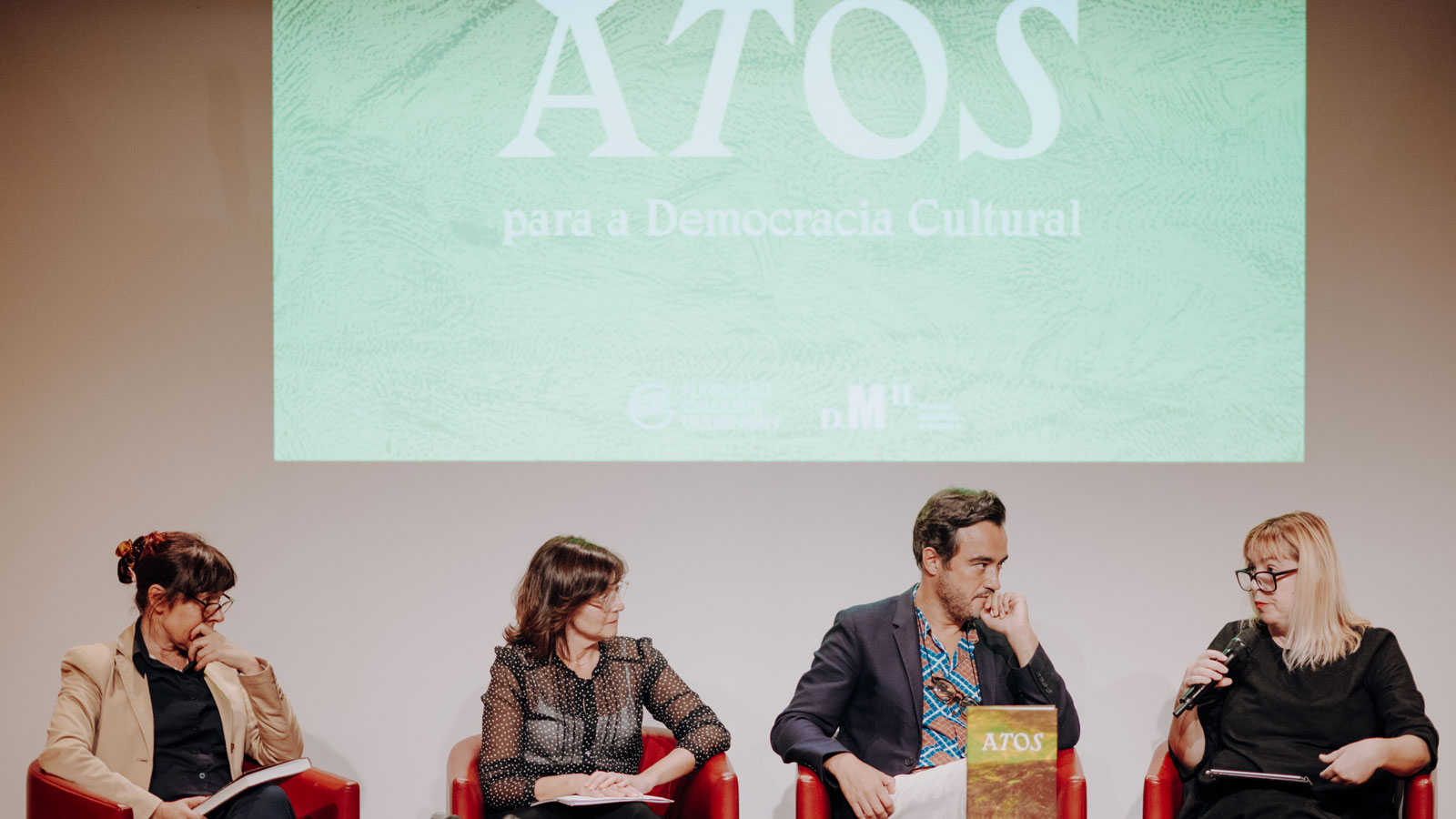
‘The first transformations and the first difficulties arose with the teams, the institutions,’ recalled Narcisa Costa, head of Equity Projects for the Calouste Gulbenkian Foundation. ‘What changes in our ways of doing? How to work with these practices, how to communicate them, how to mobilise and make available all the tools we have, without imposing a path, without deciding for others?’
That was the starting point for Atos, which travelled the country, ‘from Carrazeda de Ansiães to Tavira,’ involving 16 artistic collectives, 40 municipalities, dozens of local partnerships and hundreds of participants from all regions of Portugal, seeking to delve deeper into what is known as participatory art. Atos ‘was one of the facets of the National Odyssey that had greatest impact,’ admitted Rui Catarino, president of the Board of Trustees of the D. Maria II National Theatre. ‘The reactions show that cultural democracy isn’t an abstract concept, but one that is practised daily in order to value all voices and to recognise that artistic expressions have a real potential for transformation,’ he said. ‘When we join forces, we create assemblies with unlimited potential.’
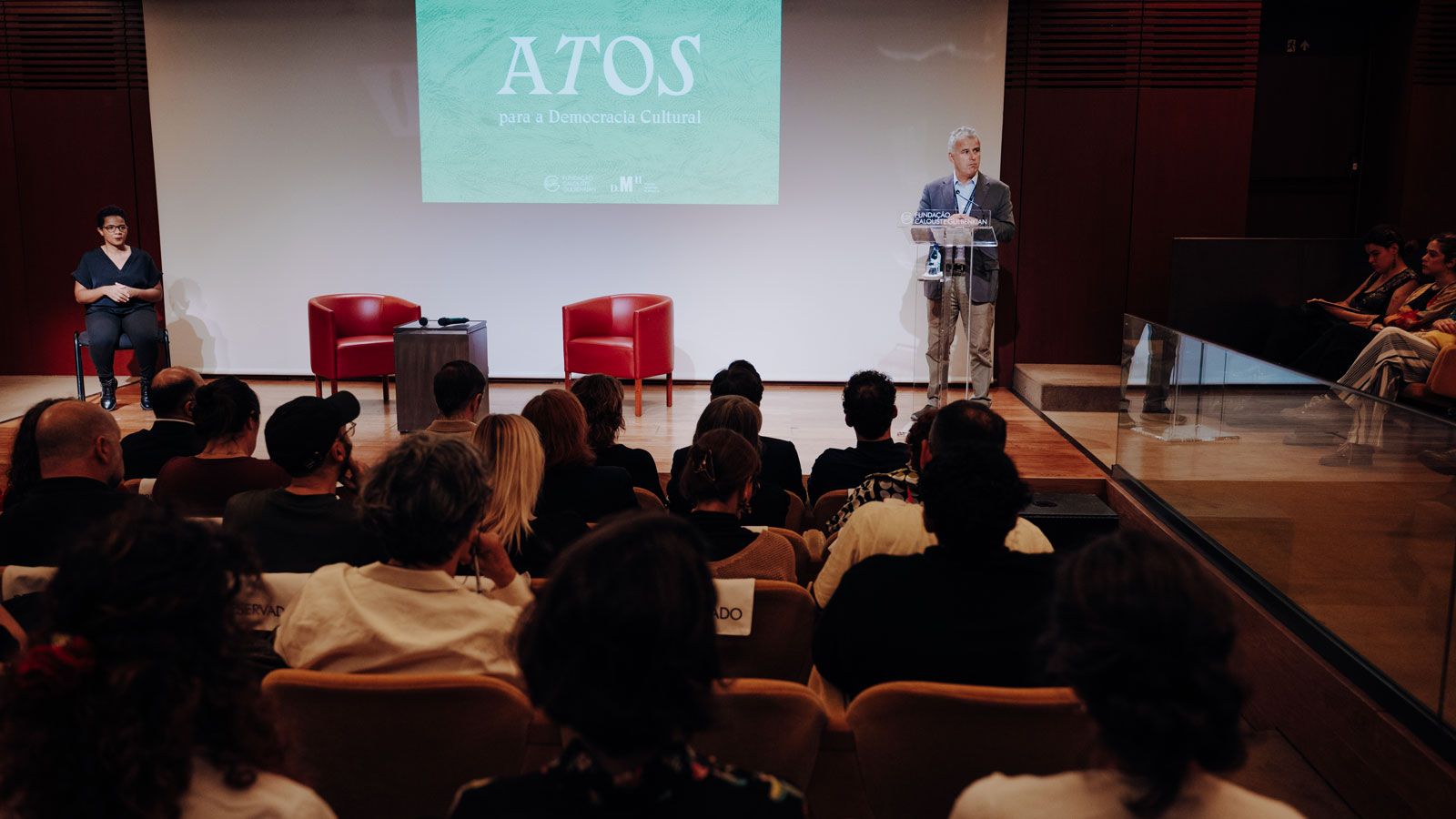
Regardless of the results obtained with each project, at the end, many participants asked ‘when are you coming back?’ That was, said Pedro Penim, the best reward: realising they had established a relationship and that there was, on both sides, a desire to return.
‘A path of no return’: the next acts
Marcus Faustini praised the fact that a national theatre, ‘normally a conservative theatre,’ took a risk and chose to ‘place its privilege within the territories,’ but he also underlined the importance of the continuity of this work: ‘This is the first act, what about the second? And the epilogue?’ he asked. ‘The second act has to take the story further. Cultural democracy depends on constant risk-taking practices.’ It isn’t enough to say we’ve been there. Or as he wittily remarked: ‘It doesn’t do much good for us to dip a foot in the water, realise that the water is cold and take it out, but never mind, we’ve taken a photo for Instagram.’
Pedro Penim keeps this concern in mind. He doesn’t want to just dip his foot. He wants to ‘leave some ballast.’ It isn’t a matter of ‘returning to Lisbon and holding these wonderful conferences, saying that we’re fantastic, but instead realising that the idea of dedication to the territory is a path of no return,’ he said. This means, on one hand, that it is important for structures to be able to act independently within the territory itself, without needing the Calouste Gulbenkian Foundation and the D. Maria II National Theatre, ‘in that hierarchical way, from top to bottom,’ but also, on the other hand, that the link must continue, albeit in a different way.
The ‘first act’ was extremely intensive, trying to reach the whole country in a short space of time. Luís Sousa Ferreira, assistant to the artistic director of the theatre, compared it to ‘a holiday romance.’ But, realising that this will actually be a long-term relationship, there is a need to adapt. If, for the artists, ‘this initial impact was more like a sprint, something you take in very quickly and which necessarily serves as a starting point,’ what is needed now – in this second year of Atos – is an ‘attempt to extend it in time, to slow down and somehow consider that a more prolonged stay in the territory will always be more beneficial,’ explained Penim.
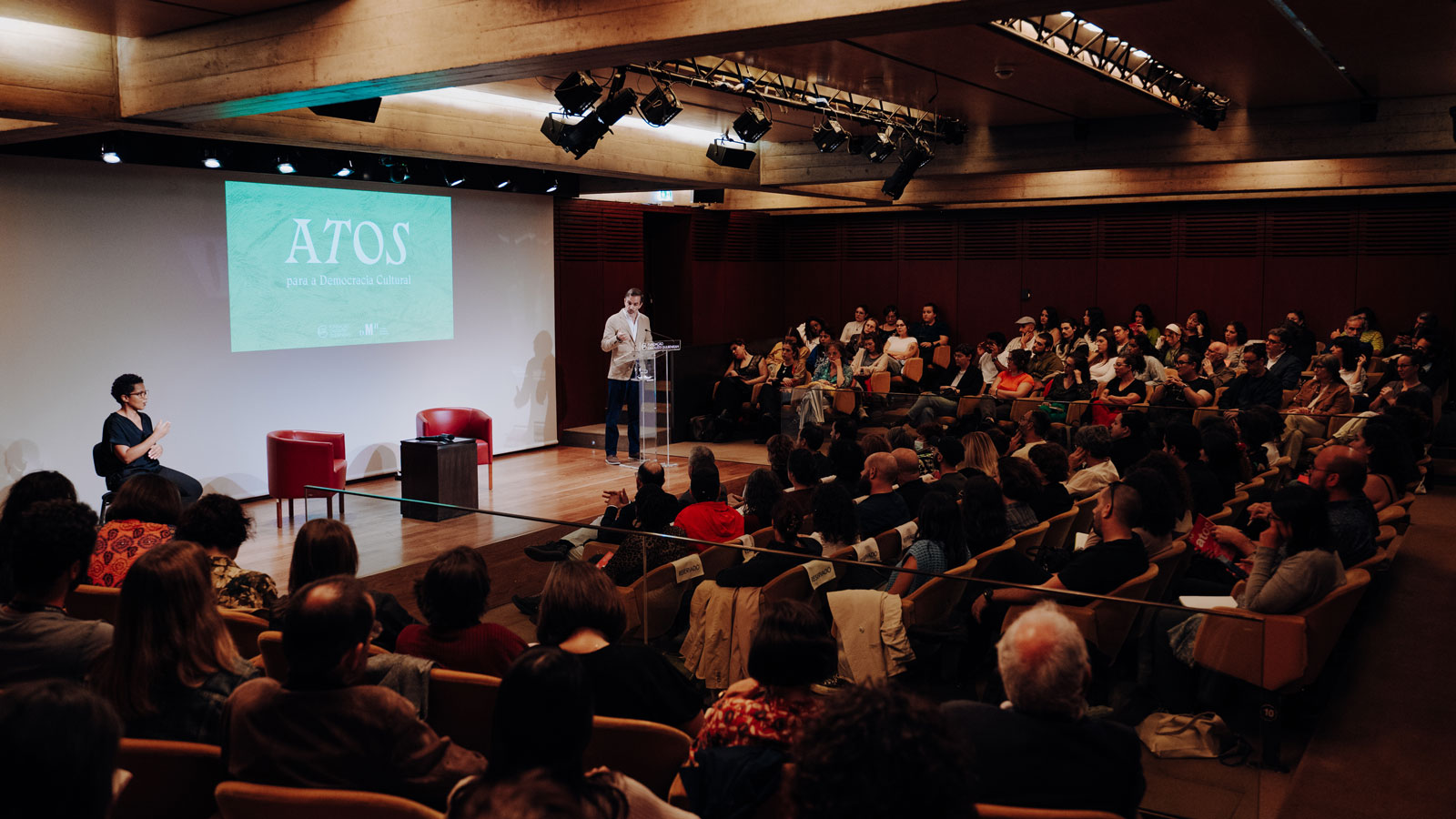
‘2023 was the starting point for us in terms of regarding ourselves as a new national theatre,’ concluded Rui Catarino. 2024 has been a year of deepening and consolidation. ‘The Atos programme continues, taking shape on top of the lessons we are learning, already expanding its sphere of action into training and thought,’ not forgetting that this year marks the 50th anniversary of the 25 April Revolution: by contributing to the democratisation of culture, Atos can be one of the ‘roads towards strengthening democracy,’ according to the administrator of TNDMII.
Challenges and tensions are part of the process: ‘We have to keep going and going’
Marcus Faustini had warned us in the morning that ‘the challenge is huge,’ but it was in the afternoon debate panels, with artists from different participative projects and representatives of councils and other local or regional institutions, that the problems and tensions of intervention in the territory became more visible.
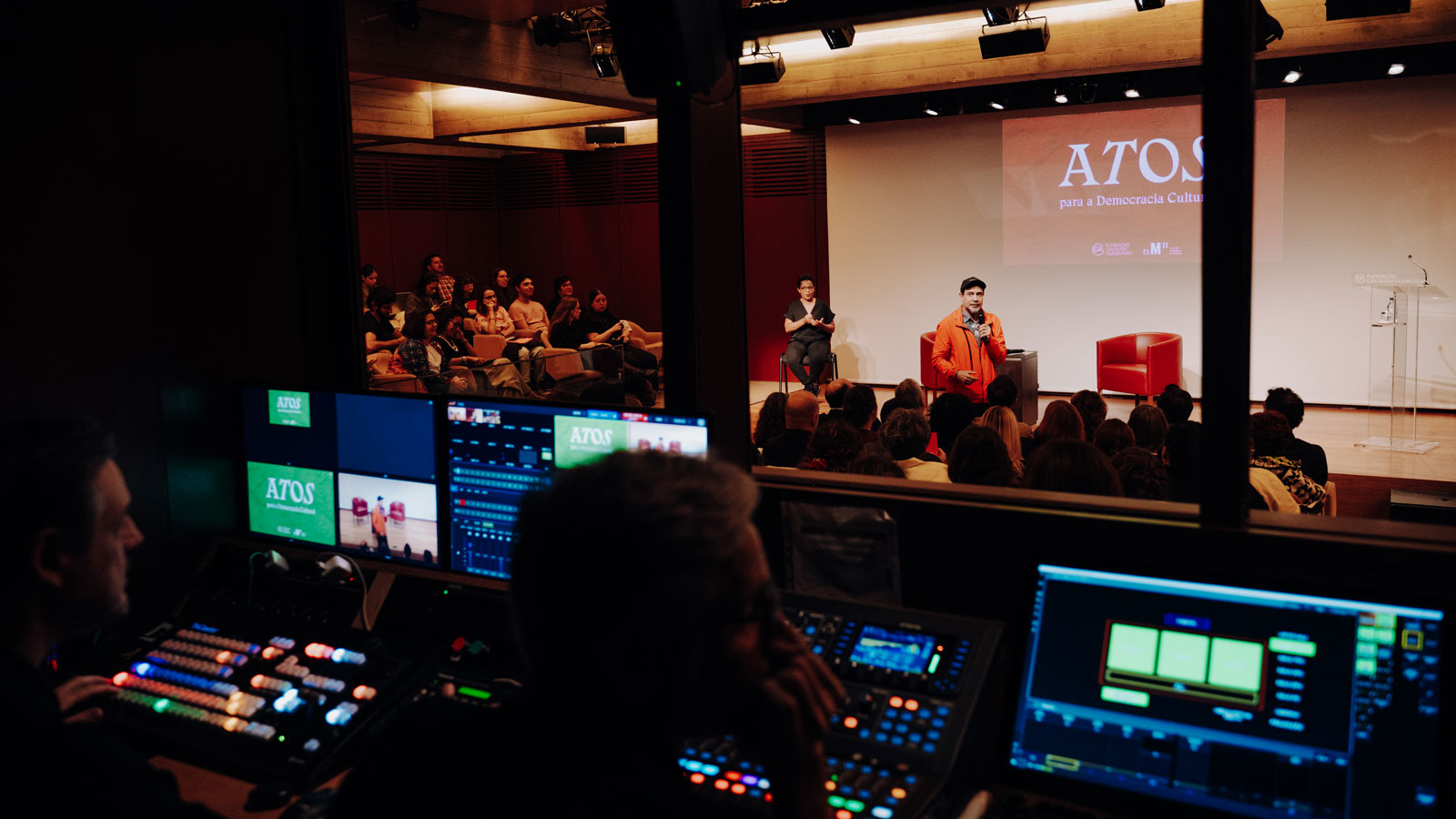
Ana Bragança, co-founder of the Ondamarela structure and Community and Participation Coordinator for the Desejar project, part of Braga 2025 – Portuguese Capital of Culture, spoke, for example, about the challenge of wanting to ‘reach everyone.’ Referring to the experience of ‘participative assemblies,’ monthly meetings that aim to be inclusive and where participants think about what could be on next year’s programme, she pondered how we can make sure that ‘those who participate are not always the same people, who already go to the cultural activities available in Braga.’ In addition to being based in the municipal market, to reach a public other than the usual one, they also organised assemblies in other places in the city and developed a range of alternative strategies, seeking people in cafés, associations, on the street. However, ‘every time we gather in an assembly, we try to be aware of who is missing, who we still haven’t reached and how we can get to those people. And there are a lot of people still missing at the assemblies. It’s an ongoing process.’
In turn, choreographer Victor Hugo Pontes described his experience with the performative project ‘Meio no Meio,’ through which, over three years, he worked in four municipalities, with four different communities. ‘I was the only external element,’ he recalled. ‘The trainers were from those territories and in addition to that we had a team of mediators, each territory had someone acting as mediator.’ It was a project of continuity in which deep relationships were established between participants. ‘The process is important and for these 40 or more people we had over the three years, it was very meaningful to be involved in the whole process.’ But, in the end, only 12 were able to participate in the show and this was a cause of some disappointment to the choreographer. ‘The path is important, not just the output. But I felt that, for those people, the result was important too. They also wanted to be on the stage, they also wanted to have that visibility.’
‘The path is important, not just the output. But I felt that, for those people, the result was important too.’
Ana Isa Coelho, coordinator of the Promotion and Development of Culture Unit at CIMAC – Inter-municipal Community of Central Alentejo, spoke of the difficulty in creating impact in an area of ‘low and very low [population] density,’ where people live in isolation and at a distance from all cultural activities. Here, the results cannot be evaluated quantitatively: ‘It’s very good for us to have an impact even if it only affects half a dozen people,’ she said. Ana Paula Amendoeira, vice-president of CCDRAlentejo, agreed, calling attention to the importance of public policies (and the need for financial support) in promoting equity in access to culture. ‘The community is isolated, tired, unattached,’ stated Ana Isa Coelho. Often, participative art projects ‘focus all their resources on the artistic object’ and in the end there is no ‘sense of belonging’ or ‘reactivation of a sense of community’: this does cause some frustration, she admitted. ‘We have to keep going and going.’
In a country where, as Ana Paula Amendoeira said, there is still ‘a certain attitude of cultural extractivism, where people come from outside to take culture to the territories,’ an expression that is still used even by political representatives, or where, as Victor Hugo Pontes recalled, some artists still say they are ‘giving a voice’ to people, as though not everyone has a voice, the path of participative art is paved with trials and errors, fighting for municipal and institutional support but at the same time not allowing itself to be limited by invitations or contracts.
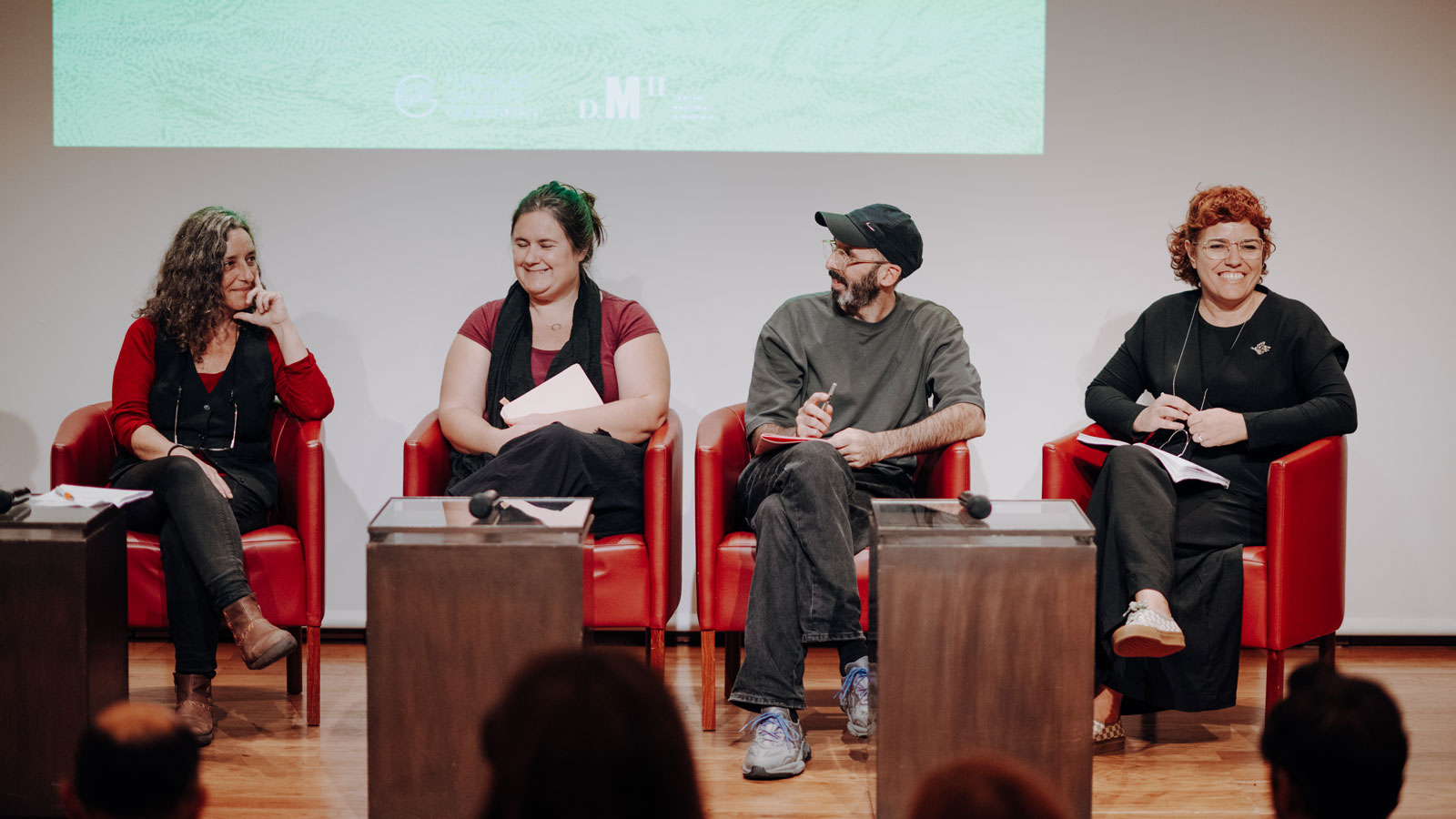
‘Cultural democracy will only happen if we, those connected to institutions, change; it isn’t the others who need to change. The onus is on us,’ reflected Dália Paulo, Municipal Director of Culture for Loulé. To bring about cultural democracy she argued that action must focus on three Ds: ‘Demolishing preconceptions, habits, modes of making, getting rid of that certain atavism and formal education for culture’; Dialogue, with an awareness that for true dialogue there is a need to listen; and finally Donate, ‘donate ourselves to others,’ approaching that which is different from us. It is a journey, she concluded.
What the conference made clear is that there is still a great deal to be done. And everyone agreed that the attempts, even if they include mistakes and disappointments, always contain something good. ‘We really want to work with everyone and to listen. It’s always new, there are many things we don’t know, that we haven’t mastered, but which we will discover together. There is unpredictability, of course, but that is the nature of encounter. And that’s what moves us,’ said Lara Soares, one of the founders of Burilar – Creative Processes in Audience Mediation, who would much rather feel a bit unsettled than stay in the comfort of her sofa. ‘We have made good progress with the idea of being happier and making the places where we work happier.’
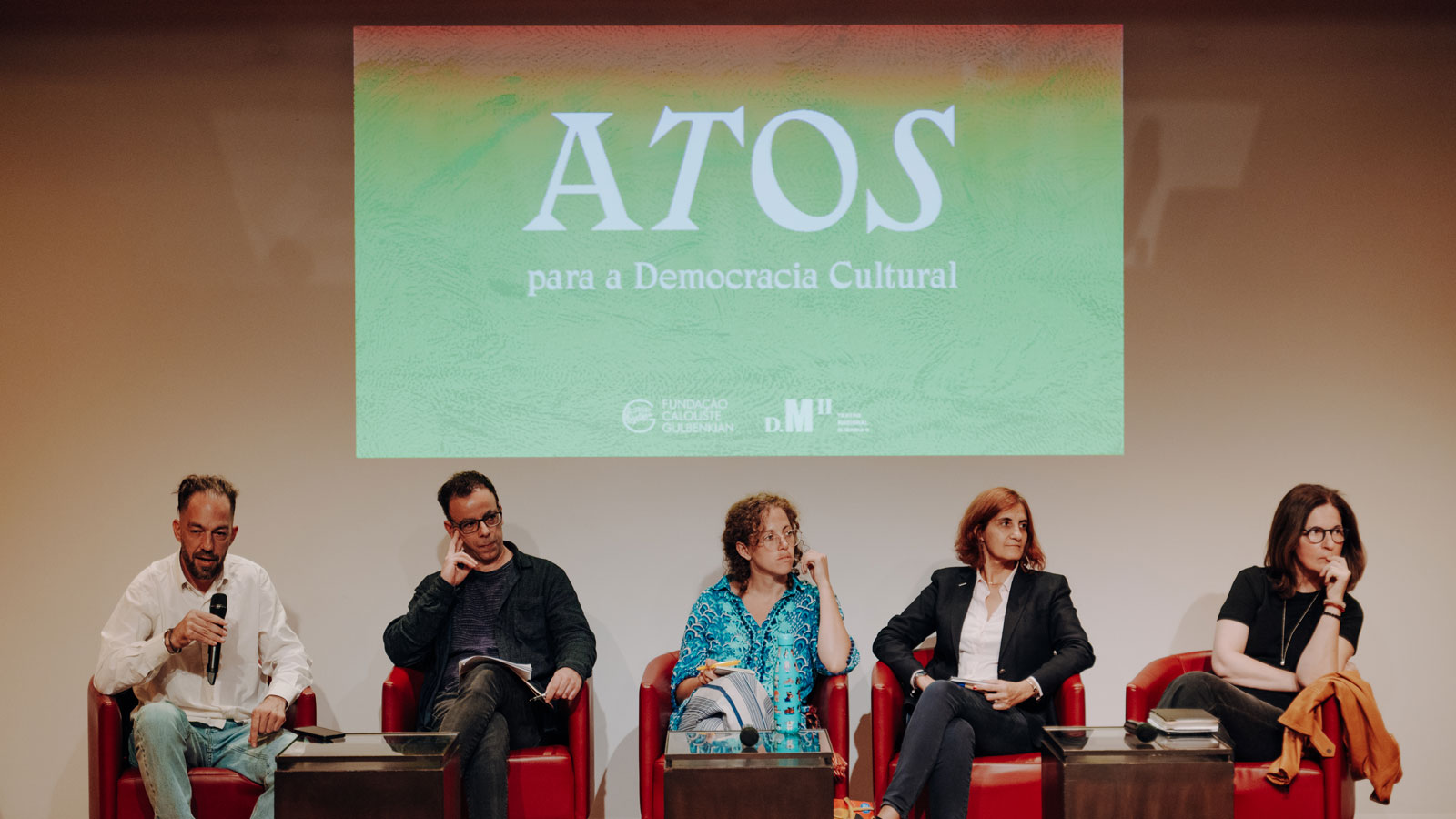
‘People really want to participate,’ stated Ana Bragança. ‘They don’t know what they can do and they are afraid to speak up because they feel they have nothing to add. The magic happens when people feel someone is listening.’ For this creator, the projects in which she participates, even if they have their failings, cannot be regarded as failures: ‘Things always happen that might seem small but which are huge,’ she said. ‘Legacies’ might simply be ‘encounters that would never happen if those two people didn’t join that project, perhaps they wouldn’t have noticed each other, lives that change, people who take a risk doing something they had never thought of.’
‘The magic happens when people feel someone is listening.’
Tension is part of the world of difference, but that is a positive thing, agreed Marcus Faustini: ‘Every time culture adds tension to art, the art improves. Dialogue is difficult but we need to work with difference, we can’t work only with those who are the same. We have to create spaces of contradiction, know how to deal with criticism. It takes time, we have to be very patient. The mediator has to enjoy listening, even if they don’t like what they’re hearing.’ That should never make them (us) give up. If we want to see transformation and actually contribute to cultural democracy, the mediator has to be inside and work from inside, therein lies the premise: ‘There is no island.’

